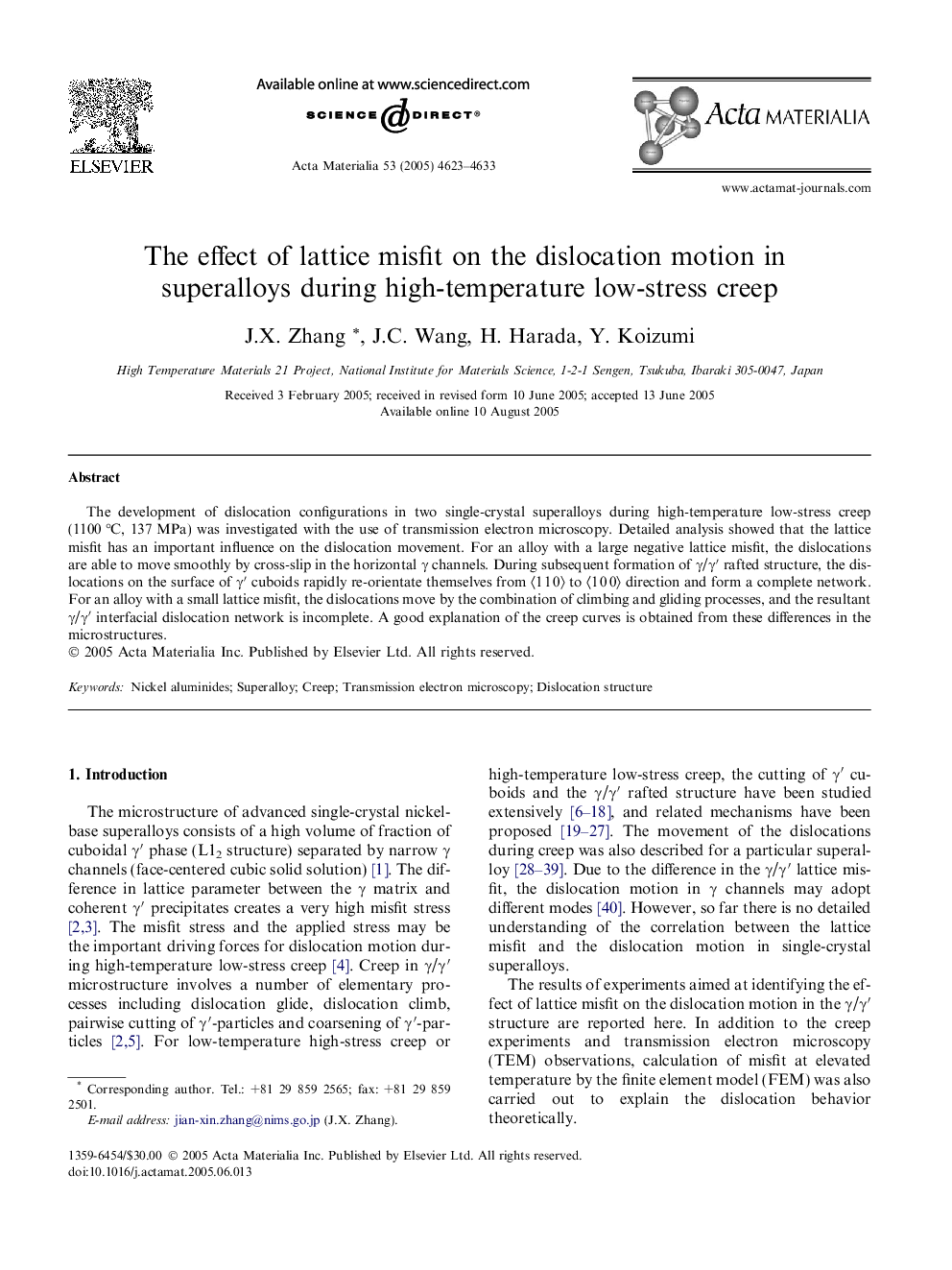| Article ID | Journal | Published Year | Pages | File Type |
|---|---|---|---|---|
| 1450961 | Acta Materialia | 2005 | 11 Pages |
The development of dislocation configurations in two single-crystal superalloys during high-temperature low-stress creep (1100 °C, 137 MPa) was investigated with the use of transmission electron microscopy. Detailed analysis showed that the lattice misfit has an important influence on the dislocation movement. For an alloy with a large negative lattice misfit, the dislocations are able to move smoothly by cross-slip in the horizontal γ channels. During subsequent formation of γ/γ′ rafted structure, the dislocations on the surface of γ′ cuboids rapidly re-orientate themselves from 〈1 1 0〉 to 〈1 0 0〉 direction and form a complete network. For an alloy with a small lattice misfit, the dislocations move by the combination of climbing and gliding processes, and the resultant γ/γ′ interfacial dislocation network is incomplete. A good explanation of the creep curves is obtained from these differences in the microstructures.
